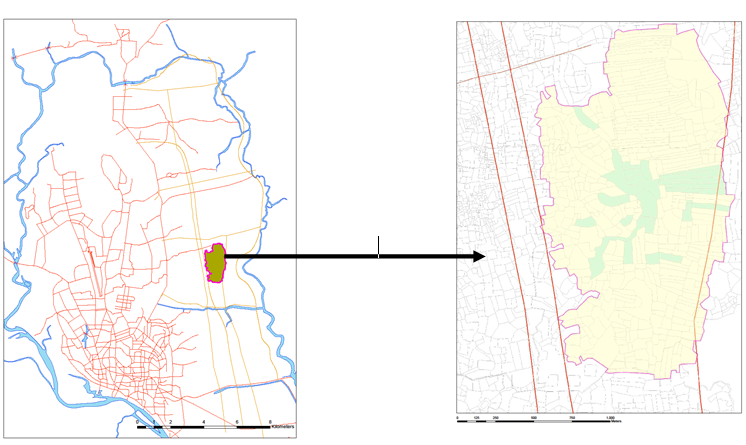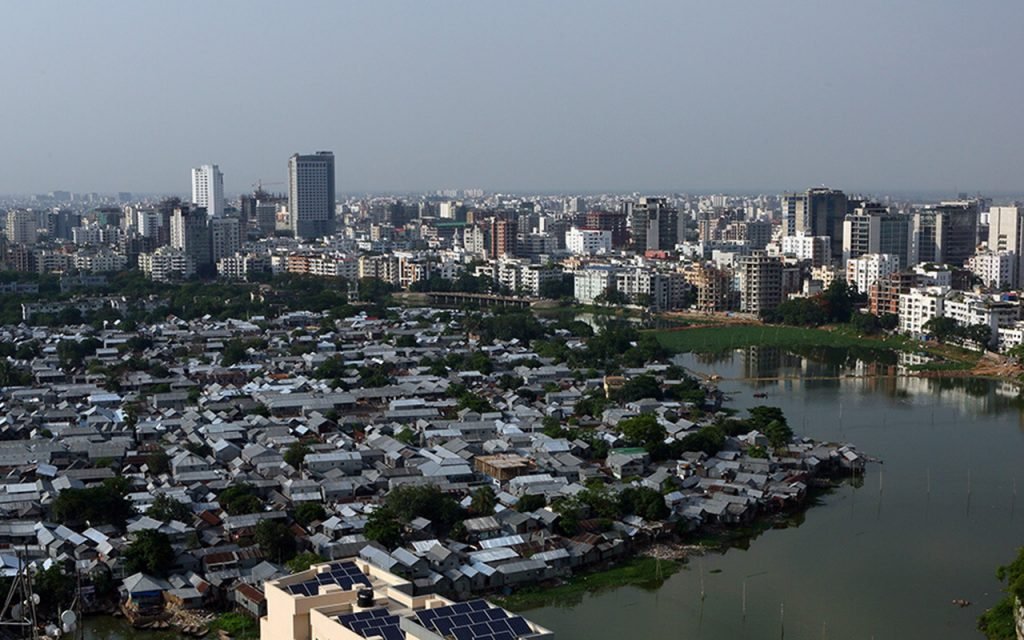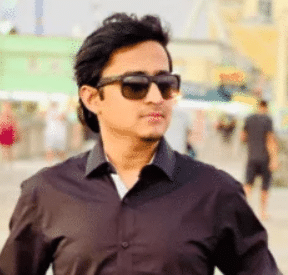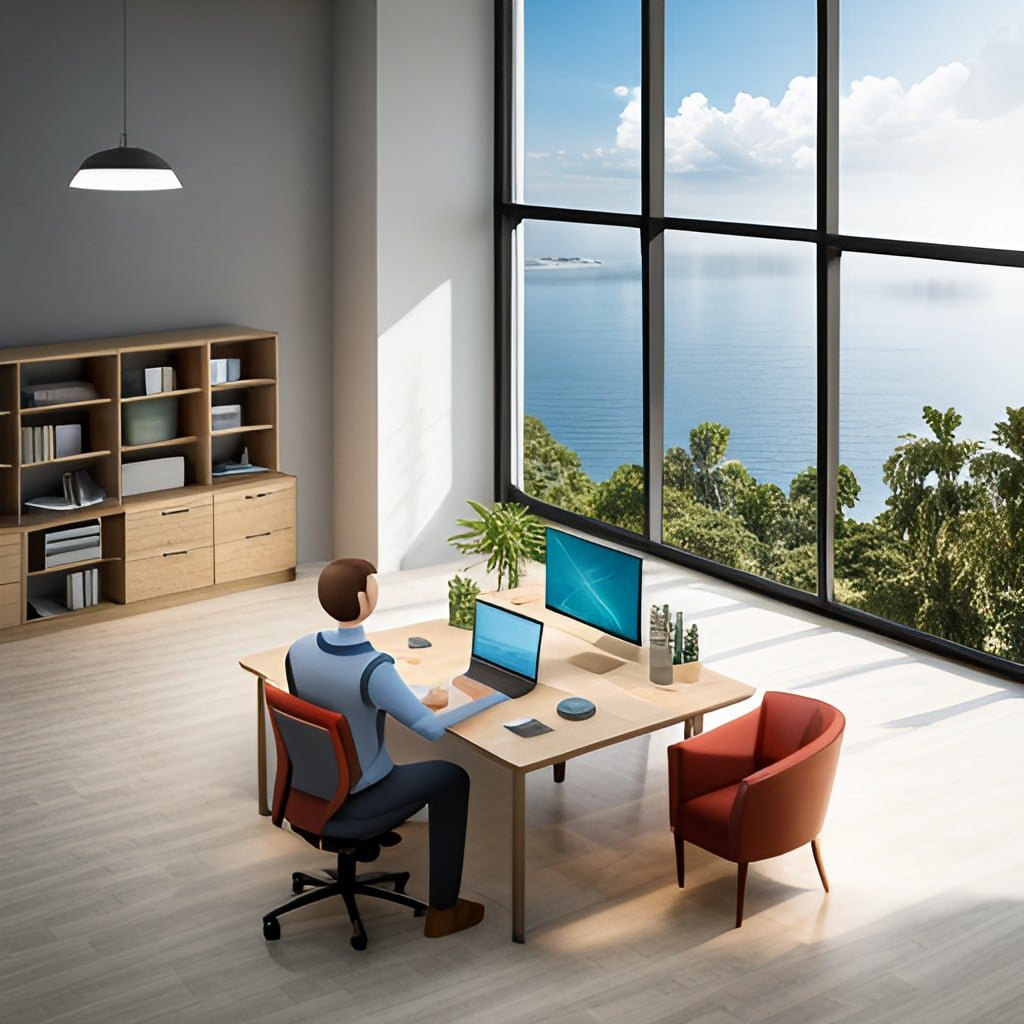The aim of the article is to design an affordable housing for low-income people in Dhaka City with necessary community facilities and utility services.
Providing Affordable Housing with Community Facilities for Low Income People in Dhaka City: Satarkul Area
Dhaka city is one of the largest cities in the world. The swift expansion of Dhaka city is attracting more and more people to this city for a source of employment occupation. For that reason, demand for different kinds of basic needs, especially housing needs, are increasing day by day in this city. Housing expansion is the symbol of urban development because housing is the central needed to the social and economic development for everyone.
Due to rapid increase in demand, there is scarcity of available supply of housing market. On the other hand, housing prices are increasing without maintaining any rules. Consequently, lower income people cannot be able to rent any house in between their ability. So, they are living in slum areas which are producing many diseases and unhealthy environmental conditions.
Government Initiatives
For mitigating that scenario, government has been taken some major programs, but majority of the projects cannot achieve its goals due to target groups (low-income people) always out of the light of project and inappropriate planning consideration. Recently, government has taken new low-income housing project in Satarkul area. This area has a lot of potential for low-income housing because surrounding areas are prominent for garments, industries and other activities.
Impact on Housing Market
As a result, huge numbers of low-income people travel in this area every day for their working purposes. If it is possible to build a low-income housing area in that place, low-income people can live here at a reasonable cost, and they have not travelled to many distances from their working places to house.
The study mainly tries to design low-income housing, community and utility facilities, providing guidelines for cost recovery, creating employment generation, indicating implementation body and providing some policies for future development which will be helpful for government and policy makers to implement the project in this area.
Objectives of the study
- To design a sustainable housing project for the lower income people with due consideration of affordability and provide community facility and utility services according to standard.
- To make policies for ensuring successful cost recovery.
Methodology
The study is mainly based on primary and secondary data. A reconnaissance survey has been made to collect a clear idea of the existing land uses, road network, and critical areas in and around the study area. Some general information and maps collected from several organizations, journal and web. After that, according to the objectives of the study, planning proposals have been determined.
Planning proposals consisting of community facilities, utility service, housing, road network and conceptual land use plan formulation in Satarkul area. After formulation of proposals the detail design of the Satarkul area has been prepared by derivation of location requirement, determination of space requirement, and analysis of holding capacity and along with certain policies have been formulated for growth management and control in the study area.
Conceptual framework
Now, let’s discuss conceptual framework about affordable housing.
Affordable Housing for low-income people:
According to the Department of Housing and Urban Development (HUD) in USA, when the monthly carrying costs of a home exceed 30–35% of household income, then the housing is considered unaffordable for that household. On the other hand, according to UNDP, an affordable housing should be such that people would be able to buy it by expending total income earned by him within 48 months.
In this project, people earning upto 8000-12000 taka (148.35 dollars according to dec 15, 2013 currency) considered as low-income people. So, lower income people will bear their housing cost in 2400-4200 taka according to HUD and remaining income will expend for other costs. This earning position had matched to reconnaissance survey data which is conducted to know the earning status of the lower income people of the study area.
Characteristics of Low-Income Housing:
For knowing the characteristics of low-income housing, literature review has been done. Different countries had been taken several projects like Umang Lamha Housing Project, Low-income housing in Mandaluyong of Philippine, Surjani Town Project, Mahila Housing SEWA Trust, Low-income housing in Mandaluyong of Philippine, these successful projects are helpful for identifying the characteristics of low-income housing.
Housing Fund
Initiatives for providing low-income housing may be taken by Government, NGOs or private developers. Sometimes Government goes in joint venture with private developers and NGOs to implement such projects. Required housing loan may be provided by public or private bank or NGOs. Government may provide the land as a subsidy, but construction cost should be recovered from selling housing units.
Study area profile
The Project area includes 549.42 acres (1648 bigha approx). The project area is located in the eastern fringe of the DMDP area and demarcated from the north by the Badda-Beraid LGED road. On the north and west side, there are extensively lowlands but on east comparatively higher land areas exit here. Most of the residential areas are developed in dispersed and scattered way in this area and being developed on low land area.
Other low-lying areas have also been filled and gradually developed day by day. Most of the roads in the internal part of the study area are basically rural roads which serve communication purpose of the local people with Dhaka city. 200ft Purbachal Road, from the east by the proposed M4A/200ft road also locates in the area. Tongi and Demra, these two highly industrial areas are situated respectively in the north and south out-skirt of the study area.

Implementation policy
This project has been taken by the government and initial finance will come from the government. Developers will be involved in the construction of housing units and community facilities. Developers will not be allowed to have profit more than 20%. Cost recovery will be done through rental housing and leasing.
Spatial Distribution of Land Uses:
The aim of the study is to build up a residential area with the required provision of community facility, open space and utility services etc. The percentages of land uses are provided below:
Table 1: percentages of land area according to land uses
| Land use | Land area(acre) | Land area (%) |
| Residential | 157.64 | 28% |
| Community | 89.98 | 16.50% |
| facility | ||
| Open space | 39 | 7% |
| Retention pond | 27.27 | 4.90% |
| Road | 65.62 | 12% |
| Employment based activity | 80 | 14.50% |
| Area for future development | 100 | 18% |
Source: estimated by authors
Designing Residential Area
The total site was divided into ten residential neighborhoods. Residential areas have been designed to focus on the financial capacity of the lower income people. Total density of residential area will be 350 person/ acre. Total 0.19 million people will be accommodated in this site. 75 % of residential areas will be for low-income people and 25% residential will be for lower-middle income people.
Lower-middle- and middle-income people have been included in residential areas for quick cost recovery. There will be two zones in this area zone “A” and zone”B”. Lower income people will be accommodated on plots of 240 sqft, 300 sqft and 350 sqft and these units will have sharing toilet and cooking facilities in zone “A”.
The size of the flats of low-income people have been kept small because it will be easier for them to afford. Lower-middle- and middle-income people have been provided units of 450 and 700 sqft respectively in zone” B”. Total density=350 person/ acre, Total area=549.42 acre; Total population=350×549.42=0.192 million people
Table: Designing of Residential Buildings for Lower, Lower middle- and Middle-income people
| Characteristics | Lower income | Lower Middle income | Middle income | ||
| Residential Units | 9614 | 9614 | 9614 | 5768 | 3985 |
| Housing Type | 5 storey, 6 units per floor | 5 storey, 6 units per floor | 5 storey, 6 units per floor | 5 storey, 6 units per floor | 6 storey, 4 units per floor |
| Unit Size (sq.ft) | 240 | 300 | 350 | 450 | 700 |
| Plot Area for each Buildings | 1440 | 1800 | 2100 | 2700 | 4200 |
| Accommodating Number of people | 43500 | 51300 | 48075 | 28444 | 19229 |
| Total Built- up area | 27.92 | 36.86 | 42.46 | 30.16 | 20.85 |
| Per capita floor space | 48 sqft/person | 60 sqft/person | 70 sqft/person | 90 sqft/person | 140 sqft/person |
| Toilet and Kitchen Facilities | Combined | Combined | Combined | Individual | Individual |
Source: estimated by authors

Neighborhood based facility: Educational Institution
Community facilities are the most important issue to ensure a social life. Community facilities in a neighborhood are designed considering the accessibility and demand of the residents. The space requirement for each community facilities and the required number of community facilities standard is derived by following the standards from Bangladesh Gazette, 2004 in Public Housing Project Development Rule, 2004.
Nursery school
Nursery schools will be located at the centre of neighborhood to ensure easy access from any part of the neighborhood. Total land area allocated for nursery school is 15.44 acre (Bangladesh Gazette, 2004). Each neighborhood will contain a nursery school. There will be needed 10 nursery schools for ten neighborhoods. The school building of each neighborhood will be of one storied because nursery school going children will face difficulty to cross stairs to reach in their class in second or more upper floor. Each classroom will accommodate 60 students. There will be 18 classrooms in each nursery school in a land area of 21,770 sqft. Rest of the places of the nursery schools will be used as playground.
Primary school
Children comprising the age-group of 5-9 is school going children. According to age-cohort data of Dhaka City, the number of students constitutes 9.4% of each neighborhood population. . There will be around 23,535 primary school going children from 10 neighborhood (Bangladesh Datasheet, 2011).
Total spatial allocation for primary school will be 15.44 acre (Bangladesh Gazette, 2004). Primary school will be allocated along nursery school but will be separated by boundary wall. Each classroom will contain 60 students. The ground floor of each school will be of 7,845 sqft. There will be 42 classrooms in each primary school. There will be sufficient space for children to play around these schools.
High School
There will be provided 5 high schools in the site. It is going to serve 22,535 students (Bangladesh Datasheet). Total land allocated for high school is 19.3 acre (Bangladesh Gazette, 2004). Each high school will have 56 classrooms in two buildings each accommodating 60 students.
The ground area of each building will be of 11,267 sqft. Each building will be three storied. There will be two shifts in high schools which will greatly reduce the construction of additional buildings for classroom. High schools will also have sufficient space for entertainment of children.
College
There will be two colleges in our site. Total 15.44 acres of land has been provided for college. Total college going students will be 9168 students (Bangladesh Datasheet). In a college each classroom will accommodate 80 students. Each classroom building will be of 4 storied. The ground space of each building will be of 34378 sqft.
Mosque
There will be built 10 mosques in Satarkul area. Total land area allocated for mosques is 7.72 acre. The building infrastructure of a mosque will have four stories and each floor will be of 3750 sqft. There will be sufficient open spaces around mosque which will be used for Juma prayer and Eid jamayet.
Playground and Play lot
There will be a large playground at the centre of neighborhoods. It has been located at the centre of neighborhoods so that children from every corner of the neighborhood can have equal access to the playground. There has been provision of play lots in each housing cluster to serve its surroundings. Play lots have been provided because the small children will not be able to go centrally provided playground for refreshment.
Park
Total 23.16 acres of land has been provided for park. Each neighborhood will have one park. These parks will function as a place of social interaction among the dwellers (Bangladesh Gazette, 2004).
Corner shop
There will be around 3 acres of land for kutcha bazaar and corner shop in 10 neighborhoods. Some shops will sell fish and vegetables which will serve the purpose of kutcha bazaar (Bangladesh Gazette, 2004).
Designing Transportation Network
Four types of roads have been proposed in Satarkul area. Major thoroughfare of 80 ft, major distributor of 60 ft, Minor distributor of 35 ft and 20 ft of access road (Bangladesh Standard). The 80 feet district distributor will form the major road network of the area. It will provide access to the area at three locations – two from the Pragati Sharani at the west and one from the south, and all meeting directly to the commercial center.
The road width is designed according to 6 feet footpaths on both sides and two-lane carriageways with enough space for moving two buses side by side. The total approximate length of this category of road is 32 km. Only in this type of road, all kinds of transport are allowed, and bus stops are placed at suitable locations so that people can easily avail public bus for long distance travel.
An efficient road network is provided to the residents of each neighborhood to ensure maximum safety, accessibility and mobility. Road network inside the neighborhood is provided in such a way that all the community facilities are within the walking distance for the person living in the farthest distance of the neighborhood.

Figure: Road Network
Designing the internal roadway is done by considering the opportunity for access to the main road as well as existing natural features, so that they are preserved. Since environment is the main issue of design, pedestrian movement is emphasized as the main mode of transport.
Motorized traffic is totally excluded from the neighborhood. A single lane access road of 25 feet is provided with a 6 feet footpath on each side. The remaining 13 feet carriageway reserved for rickshaw and emergency vehicles, like ambulance and fire service vehicles.
Utility services
Utility services are necessary for making human life habitable in urban context. The proposed plan aims to provide utility services for low income so that they have better quality of life. Utility services i.e. water supply, gas, electricity, sewerage, drainage, garbage disposal facility will be provided according to standard in the site
Water supply
Water will be supplied through pipe water scheme. It will be designed at small scale to serve 40 household by each unit. There will be two taps in each household for water supply. One of the tap will be provided in toilet and another in kitchen (Bangladesh National Building Code, 2011and real life experience).
Electricity
Each household will have access to electricity. Electricity will be provided from centralized power station. Dhaka Electric Supply Company Limited (DESCO) will have the responsibility of maintaining the power house and try to ensure zero energy services for the neighborhoods.
Gas supply
The article suggests a sharing kitchen for each three households for lower income people. There will be three burners in a kitchen. So, each household will access to a single burner. So, they will not need to wait for others to finish their (others) cooking to leave the burner for them (Real life experience).
Garbage disposal system
There will be fixed places for dumping garbage to prevent environmental pollution created by dumping garbage here and there. One collection point will be provided for one cluster. This place will always remain covered with a lid so that odor cannot spread outside. Garbage will be collected everyday by garbage collector vans and dumping it outside the area so that nuisance does not create any harm to the people.
Toilet and sanitation facility
Toilet facility will be provided through sharing for low income people but several toilets will provide for lower and middle income people. Each three household will share a single toilet. There will be two pits in each toilet. Toilet will also incorporate require space for bathing.
Drainage system
Drainage facility will be provided on communal basis. There will be drains along the both sides of roads. Drains will be designed to prevent water clogging due to rainfall and better storm water runoff management. It also better systems for preventing flood in the area (Bangladesh National Building Code, 2011).
Retention Areas
The main concern of this study was to preserve the environment of Satarkul area; in case of providing housing facility, the natural features are trying to keep undisturbed. 27.27 acre of existing water retention area is conserved to allow for safe disposal and storage of rainwater during heavy rainfall. The existing natural features are mainly water body and canal.
A network of canal spread in the inner portion of the Satarkul area is constructed; this area will also provide passive recreation and will increase the aesthetic view through improvement of the waterfront. The waterfronts will be designed with structures like benches, kiosk, means of providing shade, fishing deck and adequate walkways are constructed along the bank of these canals with proper plantation so that the environment of the area is conserved along with providing recreational facility to the residents of the area.
Apart from the existing natural features, additional water body, green belt, plantation, etc. will be provided for each neighborhood.
Open spaces
Design incorporates open spaces across the site. 12 % of the site including retention ponds will be served by open spaces. Play lot, playground, retention water body and ponds for employment generation will serve the purpose of open space. This open space will keep the environment safe and healthy.
Cost recovery
Cost recovery will be done though rental housing and leasing housing units.
Reason of selection of this process
Developers will not allow selling houses for their cost recovery because they always have a motive of quick and instanious profit maximization. But low income people do not have financial capability to pay the housing construction cost at a time. So, developers will sell the housing units to the middle and high income group people which interrupted its actual objectives.
In Satrakul area, developers will not provide ownership a certain percentage of land because they will gain ownership of a government khash land. Then they may build up large apartments for high income group. So, it will be then no more low-income housing area. Besides, developers will build up high rise apartments which will increase density of the area.
Then community facility will not be commensurate with population. It is better to allow rental housing in the site for low-income people as low-income people keeping the rent within affordability. This process may be lengthy for cost recovery. So, some housing units will sell for middle income people which will be ensured cost recovery quickly.
Besides after cost recovery this low-income housing will be a source of revenue for government. For cost recovery of community facilities and construction of lower middle-income houses will be leased to these people for 99 years. Because they have better affordability then low-income people so they will be able to pay the money of lease within due time.
Rental housing
Initial funding for the project will come from government organizations like National Housing Authority, House Building Finance Corporation. They will provide the money to be paid to the developers for the construction of buildings and community facilities. Low income group has been divided into three groups. Their rent would never exceed more than 30% of the lower limit of their income range. This will keep the house affordable for low income people.
- Rent will have to be paid within first ten days of the month.
- This rent will be collected by an authority appointed by NHA. This authority will be deposited in the fund of NHA until complete cost recovery is made.
- NHA will pay the money or loan of organizations involved in initial funding process.
- After the cost recovery the rent will be deposited by NHA as government revenue.
Rental payment:
- Rental payment for 250 sqft flats, 300 sqft, and 350 sqft flats will be 2400, 3000 and 3450/4200 respectively according to 30% income level (mentioned in conceptual planning proposal).
Time to recover construction cost:
- For 250 and 300 sqft flats it will take 20 years to recover cost of construction and 350 sqft flats it will be 19 years 6 months.
Table 3: Time period of cost recovery
| Unit size | Cost to be recovered in Taka (million) | Monthly rental payment in taka | Cost recovery period |
| 250 sqft | 0.576 | 8000*30%=2400 | 20 years |
| 300 sqft | 0.72 | 10000*30%=3000 | 20 years |
| 350 sqft | 0.84 | 12000*30%=3600 | 19 years 6 months |
Source: estimated by authors
Leased house:
Houses for lower middle and middle income people will be leased to them for cost recovery. For that reason, housing units of 450 sqft and 700 sqft will be leased. The time period of this lease will be 99 years. Total cost procedure is given below:
- Total cost incurred for construction of community facility, leased houses and roads = 1125.9 million tk
- Per sqft cost = 2150 tk/sqft
- Lease rate for 450 sqft flat with 20% profit= 967500 tk+ 967500*.20=1.16 million tk
- Lease rate for 700 sqft flat with 20% profit = 1505000 tk+1505000*.20=1.81 million tk
This money has to be paid within 3 years of taking lease within 36 installments. If anyone fails to pay the money within this period he will be fined.
Overall cost of construction for community facility
Housing and community facilities costs will be listed here. Let’s explore the total cost for low-income housing in Satarkul area.
| Community Facility | Construction cost in taka (million) |
| Nursery School | 32.65 |
| Primary School | 70.60 |
| High School | 50.70 |
| College | 20.62 |
| Mosque | 22.50 |
| Hospital: | 27.00 |
| Circuit House | 12.96 |
| Police Station | 6.48 |
| Fire Station | 6.48 |
| Vocational Training Centre | 10.8 |
| Road | 44.22 |
| Total cost | 11259.25 |
Table: Cost of leased housing units and community facilities
Source: estimated by authors
On site employment generation opportunity
Prime purpose of providing employment generation opportunity in the site is to provide a scope to the future inhabitants a working place in close proximity of their habitat. This will reduce the possibility of the residents to leave the site to settle any place outside the project area. My Policies for the employment generation activities encourage homemade product and agricultural based employment. Employment generation activity has been divided into major types. These are:
Agricultural Farming
15 acres of land was provided for fruit cultivation and vegetable cultivation. Seasonal vegetable and fruits will be cultivated in these lands. In each housing block there will be one agricultural land in this regard. These lands will be located within the housing blocks because they will not hamper the livable condition for the residents. People living in nearby houses will have an excellent opportunity of employment.
Livestock Rearing
About 15 acre land will be provided for livestock rearing. Livestock rearing will include rearing of cows and goat. Employment generation activity includes milking livestock, looking and feeding them etc.
Poultry Farming
About 10 acres of land will be provided for poultry farming. Working opportunities in this sector includes collecting eggs, feeding chickens, cleaning up the farm etc.
Fishery
There will be one pond between two housing clusters for fishery. This will provide employment to the people of surrounding block.
Light Industry
Light industry like milk processing industry and fruit processing industry will be allocated on the site for employment of local people. Total area covered by them will be 10 acre. They will be located near transport network for easy transport of their perishable products.
Implementation procedure
As Satarkul area is a government khash land, so there will be no necessity of acquisition of land. It also reduces time length for getting land and approval from relevant authority because if acquisition is required approximately one year will be needed for getting this land to build low income housing.
Government Involved in Implementation process
So, this land is easily available for this project. For implementing water, gas, electricity and utility facilities, broad and detail policy and site plan will be prepared with co-operation of relevant authorities like National Housing Authority (NHA), Rajdhani Unnayan Kartripakha (RAJUK), Roads and Highway Department, Dhaka Electric Supply Authority (DESA) etc. For starting construction process, it is needed to select the developers through open tender process and ask them to submit Expression of Interest (EOI). Through the process of tendering, developers will be selected who will be able to implement the project within minimum cost.
The maximum profit margin for the developers will be 20%. Different developers will be appointed for different construction work such as community facilities, building structure, educational institutions, and mosques.
RAJUK Regulations
When construction work for residential buildings will start, then it is needed to maintain all rules and regulation of RAJUK such as Floor Area Ratio (FAR), set back, road width according to building area, size of the buildings and others. Developers will construct fixed size building units which units are mentioned in design step for lower income and lower- and middle-income people according to the site plan.
Along with building construction, it is urgent to provide necessary utility service and community facilities for the area people. Utility service connection will be provided for each building by relevant authority and community facilities will be developed according to standard of Bangladesh Gazette, 2008.
Government Monitoring
After the completion of development of all infrastructures, the developers will hand over the buildings and infrastructure to the government and they will receive total incurred cost for this low-income people housing. After that, distribution of housing units will be monitored by government and will provide housing units for the lower- and middle-income people according to previous mentioned size of units.
In construction process, developers will cost huge amount of money. So, it is required to recover that cost. Cost recovery will be done through rental housing in low income housing units and leasing lower-middle- and middle-income housing units. But this all of the tasks must be monitored by government otherwise that project does not achieve the light of its objectives.
Management Satarkul Low-income Area
Rent will be collected by government from the low income people of the site. For this purpose, NHA will employ some people for the site of rental collection from the residence. Maintenance is an important factor of the sustainability of any land uses like this project. I propose three types of maintenance sections for the area which cover all of the open space, community and utility facilities.
It may be helpful for the resident of that site for the formation of tenant association for building management. By this association local people can be able to convey their objections which will be transmitted to government for solving those problems.
Maintenance task will be divided into three stakeholders
Governmental authorities:
Water, gas, and electricity such utility services will be under the maintenance of government organization. Maintenance of centralized facilities will be also on the hand of relevant government organization.
Local authorities declared by government:
Government will form a local authority to maintain some community facility. Community facilities like park, corner shop, and playground will be maintained by local authority.
Individuals:
Utility services like sewerage, drainage will be under responsible individual of a house or individuals of a housing block to look after it. Individuals living in housing units will take care of play lot of their housing block.
Policy Guidelines
- Close monitoring by the government must be ensured to restrict illegal encroachment of the protected areas.
- Public transportation like bus will be allowed on the main roads (major distributor road in the study area) and is totally restricted in the residential zones.
- To ensure a communal and livable environment, a community co-operative society will be formed in every neighborhood.
- To eliminate congestion problems entry of service vehicles to kutcha bazaar will be allowed on a certain time period of day.
- Kutcha bazzar is far from the neighborhood area so that bad smell cannot reach to the dwelling.
- Heavy industry should never be allowed inside the study area and there should be restriction on other industrial development too.
- Neighborhoods designed for specified income groups must be ensured to reach them and their affordability must be ensured too.
Natural and Surrounding Area Policy
- Development alongside the canals should be strictly prohibited with a plantation buffer.
- Preserving the open spaces and the greenery is also important for the area to have a desirable living environment. The misuse of open space by unwise construction, car parking or other uses should be regulated and the open spaces should be planned for safe playing of the children.
- Waste collecting vans can enter the residential area at certain period of day, collect wastes from households and dump that in dustbins provided at major points of roads and large waste collecting tracks will collect them on next morning and dump that outside the area.
- If any household wants to sell his flat, he must sell that to government and cannot sell that to some other person.
- The price of the commodities sold at Kutcha bazaar, shopping center and corner shop would have to be reasonable so that lower income group people can afford these items.
- High potential agricultural land must be free from any other type of land uses.
- Finally, developing the community feeling and sense of belongingness among the residents should be taken as a prime concern. It can be accelerated by grouping the places of common activities, reducing the discrimination among the classes & buildings.
Conclusion
Dhaka as one of the largest megacities of the world is currently booming with urban people without having the capability of providing good housing to most of its inhabitants. A properly planned town is needed to fulfill their residential need. So, a satellite town is planned for them in the satarkul area following the new town development concept.
In this study it has been tried to avoid the previous mistakes made in the plan of Dhaka City. While planning the area, mainly focus on minimizing the housing cost for low-income people and at the same time the essence of a natural clean and pollution free environment has been taken into consideration. Residential areas are supported by commercial hubs and public amenities that are planned and integrated for an ideal “sustainable development”.
Authors- Md Soriful Islam, Ahmad jami Safayet,










